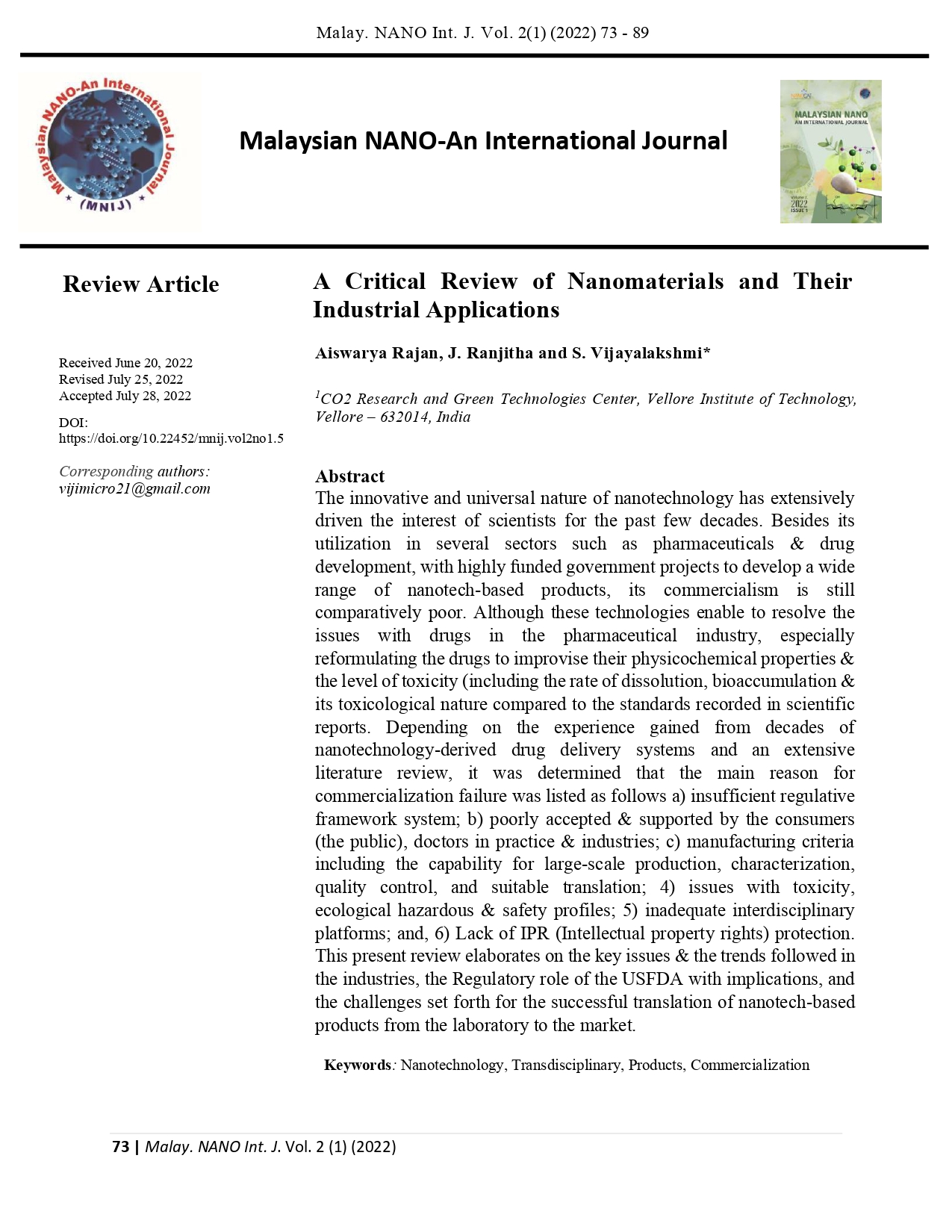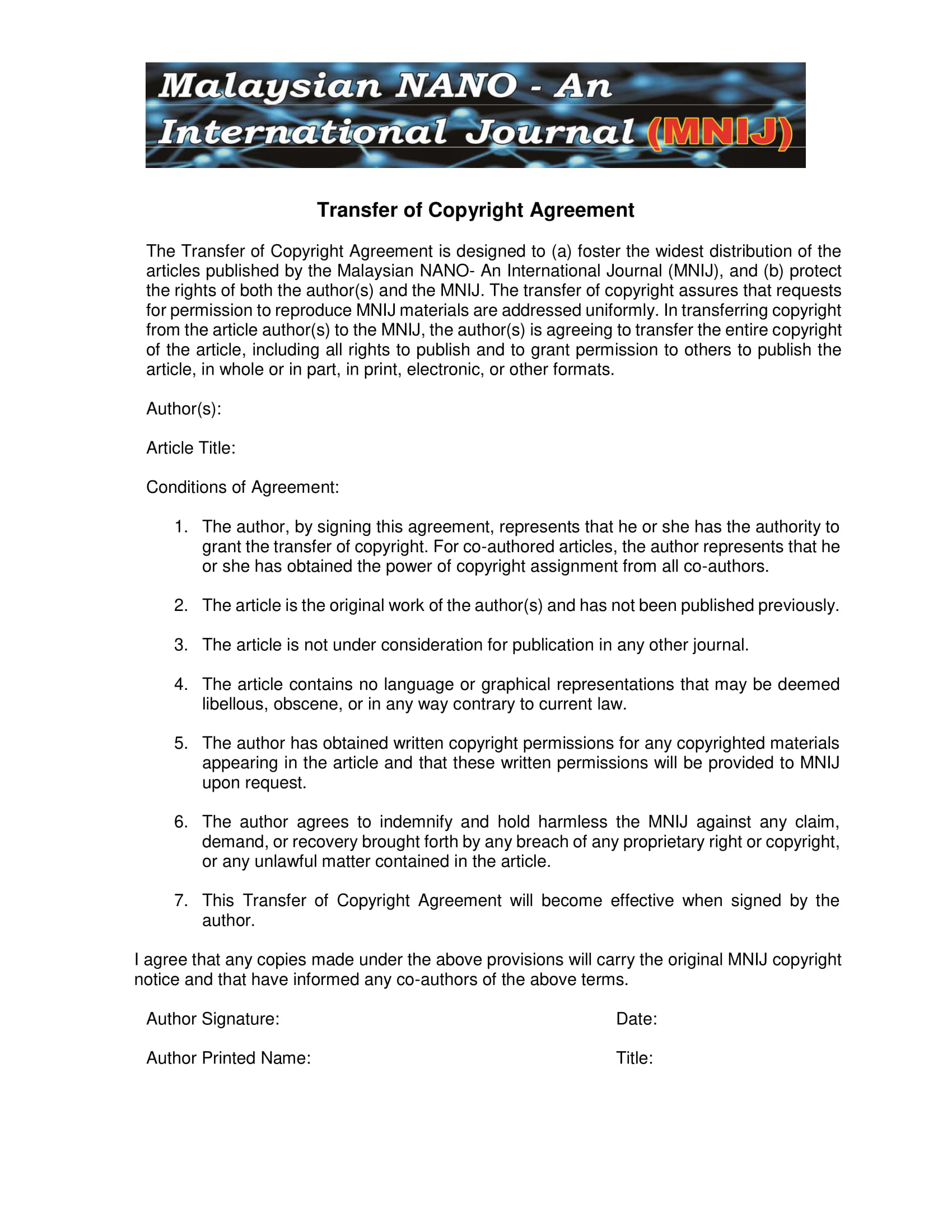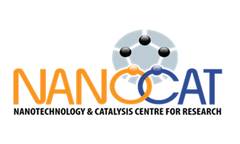A Critical Review of Nanomaterials and Their Industrial Applications
DOI:
https://doi.org/10.22452/mnij.vol2no1.5Keywords:
Nanotechnology, Transdisciplinary, Products,, CommercializationAbstract
The innovative and universal nature of nanotechnology has extensively driven the interest of scientists for the past few decades. Besides its utilization in several sectors such as pharmaceuticals & drug development, with highly funded government projects to develop a wide range of nanotech-based products, its commercialism is still comparatively poor. Although these technologies enable to resolve the issues with drugs in the pharmaceutical industry, especially reformulating the drugs to improvise their physicochemical properties & the level of toxicity (including the rate of dissolution, bioaccumulation & its toxicological nature compared to the standards recorded in scientific reports. Depending on the experience gained from decades of nanotechnology-derived drug delivery systems and an extensive literature review, it was determined that the main reason for commercialization failure was listed as follows a) insufficient regulative framework system; b) poorly accepted & supported by the consumers (the public), doctors in practice & industries; c) manufacturing criteria including the capability for large-scale production, characterization, quality control, and suitable translation; 4) issues with toxicity, ecological hazardous & safety profiles; 5) inadequate interdisciplinary platforms; and, 6) Lack of IPR (Intellectual property rights) protection. This present review elaborates on the key issues & the trends followed in the industries, the Regulatory role of the USFDA with implications, and the challenges set forth for the successful translation of nanotech-based products from the laboratory to the market.
Downloads
References
C. Palmberg, The transfer and commercialisation of nanotechnology: a comparative analysis of university and company researches. J. Technol. Transf. 2008; 33: 631–652.
L. Mazzola, Commercializing nanotechnology. Nat. Biotechnol. 2003; 21: 1137–1143.
T. Flynn, C.Wei, The pathway to commercialization for nanomedicine. Nanomedicine: NB. 2005; 1:47–51.
R.A. Stein. Nanotechnology: is the magic bullet becoming reality? Insight and Intelligence. 2014.
M. Taylor, Regulating the Products of Nanotechnology: Does FDA Have the Tools It Needs? Wilson Center and The Pew Charitable Trusts, Washingto. 2006.
Reamer, L. Icerman, J. Youtie, Technology Transfer and Commercialization: Their Role in Economic Development. U.S. Department of Commerce.2003.
T. Spinverse. Commercialisation of Nanotechnology—Key Challenges Workshop Organised by Nanoforum in Helsinki. Finland. 2007: 1–27.
R. Allen. Venture capital investment in nanotechnology. 2014
J. Bradley, Nanotech venture capital: healthcare and life sciences provide life support. 2021.
T. Satterfield, M. Kandlikar, C. Beaudrie, J. Conti, B. Harthorn, Anticipating the perceived risk of nanotechnologies. Nat. Nanotechnol. 2009; 4 : 752–758.
V. Morigi, A. Tocchio, C. Pellegrini, J. Sakamoto,M. Arnone, E. Tasciotti, Nanotechnology in medicine: from inception to market domination. J. Drug Deliv. 2012: 1–7.
K. Vega-Villa, J. Takemoto, J. Yanez, C. Remsberg, M. Forrest, N. Davies, Clinical toxicities of nanocarrier systems. Adv. Drug Deliv. Rev. 2008; 60: 929–938. 86 | Malay. NANO Int. J. Vol. 2 (1) (2022)
R. Bosetti, L. Vereeck, Future of nanomedicine obstacles and remedies. Nanomedicine. 2011; 6: 747–755.
S. Suppan, Racing Ahead U.S. Agri-Nanotechnology in the Absence of Regulation. Institute for Agriculture and Trade Policy. 2011; 3–20.
A.M. Hahn, A.K. Singh, P. Sharma, C.B. Scott, M.M. Brij, Nanoparticles as contrast agents for in- vivo bioimaging: current status and future perspectives. Anal. Bioanal. Chem. 2011; 399 : 3–27.
E. Altınoğlu, T.J. Russin, J.M. Kaiser, B.M. Barth, P.C. Eklund, M. Kester, J.H. Adair, Near- infrared emitting fluorophore-doped calcium phosphate nanoparticles for invivo imaging of human breast cancer. ACS Nano. 2008; 2: 2075–2084.
K. Donaldson, P.H. Beswick, P.S. Gilmour, Free radical activity associated with the surface of particles: a unifying factor in determining biological activity? Toxicol. Lett. 1996; 88 (1–3) : 293–298.
C. Lherm, R.H. Müller, F. Puisieux, P. Couvreur, Alkylcyanoacrylate drug carriers. II. Cytotoxicity of In vitro uptake of polystyrene latex cyanoacrylate nanoparticles with different alkyl chain length. Int. J. Pharm. 1992; 84 : 13–22.
S. Raj, S. Jose, U.S. Sumod, M. Sabitha, Nanotechnology in cosmetics: opportunities and challenges. J. Pharm. Bioallied Sci. 2012; 4 (3) : 186–193.
US FDA, Nanotechnology: a report of the U.S. Food and Drug Administration Nanotechnology Task Force. 2007.
Kumari, S.K. Yadav, S.C. Yadav, Biodegradable polymeric nanoparticles based drug delivery systems. Colloids Surf. 2010; B 75: 1–18.
J. Mehta, J. Blake, C. Craddock, Comparative efficacy of amphotericin B lipid complex and liposomal amphotericin B for the treatment of invasive fungal infections in HSCT recipients and other immunocompromised patient populations with hematologic malignancies: a critical review. Open Transplant. J. 2011; 5 : 23–29.
A.C. Silva, M.L. Garcia, M.A. Egea, J. Fonseca, R. Silva, Preparation, characterization and biocompatibility studies on risperidone-loaded solid lipid nanoparticles (SLN): high pressure homogenization versus ultrasound. Colloids Surf. B: Biointerfaces. 2011: 158–165.
R.H. Muller, S. Runge, K. Schulze-Forster, W. Mehnert, Cytotoxicity of solid lipid nanoparticles as a function of the lipid matrix and the surfactant. Pharm. Res. 4. 1997; 458–462.
M. Nassimi, H.D. Lauenstein, R. Hussein, H.G. Hoymann, W. Koch, A toxicological evaluation of inhaled solid lipid nanoparticles used as a potential drug delivery system for the lung. Eur. J. Pharm. Biopharm. 2010; 75: 107–116.
Consumer products inventory. The Project on Emerging Nanotechnologies, 2014.
J. Pardeike, A. Hommoss, R.H.Muller, Lipid nanoparticles (SLN, NLC) in cosmetic and pharmaceutical dermal products. Int. J. Pharm. 2009; 366 : 170–184.
M. Ferrari, Nanogeometry: beyond drug delivery. Nat. Nanotechnol. 2008; 3 : 131–132.
Y. Barenholz, Doxil® - The first FDA approved nanodrug: lessons learned. J. Control. Release. 2012; 160 : 117–134.
J.H. Sakamoto, A.L. van de Ven, B. Godin, E. Blanco, R.E. Serda, A. Grattoni, A. Ziemys, A.
Bouamrani, T. Hu, S.I. Ranganathan, E. De Rosa, J.O. Martinez, C.A. Smid, R.M. Buchanan, S.Y. Lee, S. Srinivasan, M. Landry, A. Meyn, E. Tasciotti, X. Liu, P. Decuzzi, M. Ferrari, Enabling individualized therapy through nanotechnology. Pharmacol. Res. 2010; 62 : 57–89.
F.L. Muller, J.M. Latimer, Anticipation of scale up issues in pharmaceutical development, Comput. Chem. Eng. 33 (2009) 1051–1055.
Laouini, C. Jaafar-Maalej, I. Limayem-Blouza, S. Sfar, C. Charcosset, H. Fessi, Preparation, characterization and applications of liposomes: state of the art, J. Colloid Sci. Biotechnol. 1 (2012) 147–168.
N. Desai, Challenges in development of nanoparticle-based therapeutics, AAPS J. 2012; 14 : 282– 295.
Kaur, S. Kakkar, M. Yadav, K. Jindal, I. Sharma, Autoclavable nanovesicular composition, IPA/700/Del/2014. 2014.
R. Shegokar, K.K. Singh, R.H. Müller, Production & stability of stavudine solid lipid nanoparticles—From lab to industrial scale. Int. J. Pharm. 2011; 416 : 461–470.
R. Shegokar, K.K. Singh, R.H. Mueller, Nevirapine nanosuspension: comparative investigation of production methods. Nanotechnol. Dev. 2011; 1 : e4.
V. Kakkar, I.P. Kaur, Preparation, characterization and scale-up of sesamol loaded solid lipid nanoparticles. Nanotechnol. Dev. 2012; 2 : 40–45.
A.P. Ranjan, A.Mukerjee, L. Helson, J.K. Vishwanatha, Scale up, optimization and stability analysis of Curcumin C3 complex-loaded nanoparticles for cancer therapy. J. Nanobiotechnol. 2012; 10 : 38.
R.H. Muller, K. Mader, S. Gohla, Solid lipid nanoparticles (SLN) for controlled drug delivery - A review of the state of the art. Eur. J. Pharm. Biopharm. 2000; 50 : 161–177.
M.M. Mojahedian, S. Daneshamouz, S.M. Samani, A. Zargaran, A novel method to produce solid lipid nanoparticles using n-butanol as an additional co-surfactant according to the o/w micro- emulsion quenching technique. Chem. Phys. Lipids. 2013; 174 932: 32–38.
M. Gaumet, A. Vargas, R. Gurny, F. Delie, Nanoparticles for drug delivery: the need for precision in reporting particle size parameters. Eur. J. Pharm. Biopharm. 2008; 69 : 1–9.
K. Langer, M.G. Anhorn, I. Steinhauser, S. Dreis, D. Celebi, N. Schrickel, S. Faust, V. Vogel, Human serum albumin (HSA) nanoparticles: reproducibility of preparation process and kinetics of enzymatic degradation. Int. J. Pharm. 2008; 347 (1–2) : 109–117.
W. Mehnert, K. Mader, Solid lipid nanoparticles: production, characterization and applications, Adv. Drug Deliv. Rev. 2001; 47: 165–196.
Saez, M. Guzman, J. Molpeceres, M.R. Aberturas, Freeze-drying of polycaprolactone and poly(D, L-lactic-glycolic) nanoparticles induce minor particle size changes affecting the oral pharmacokinetics of loaded drugs. Eur. J. Pharm. Biopharm. 2000; 50 : 379–387.
P. Fonte, S. Soares, A. Costa, J.C. Andrade, V. Seabra, S. Reis, B. Sarmento, Effect of cryoprotectants on the porosity and stability of insulin-loaded PLGA nanoparticles after freeze- drying. Biomatter. 2013; 2: 329–339.
G. Heimeriks, Interdisciplinarity in biotechnology, genomics and nanotechnology. Sci. Public Policy. 2013; 40 : 97–112.
D.Mowery, Nanotechnology and the US national innovation system: continuity and change. J. Technol. Transf. 2011; 36 : 697–711.
L. Kantor, NIH roadmap for medical research. Alcohol Res. Health. 2008; 31: 12–13.
V. Wagner, A. Dullaart, A. Bock, A. Zweck, The emerging nanomedicine landscape. Nat. Biotechnol. 2006; 24: 1211–1217.
R. Bawa, S. Melethil,W. Simmons, D. Harris, Nanopharmaceuticals—patenting issues and FDA
regulatory challenges. Am. Bar Assoc. Sci. Technol. Lawyer. 2008; 5: 10–15.
D. Kahan, D. Braman, P. Slovic, J. Gastil, G. Cohen, Cultural cognition of the risks and benefits of nanotechnology. Nat. Nanotechnol. 2009; 4: 87–91.
J. Paradise, Claiming nanotechnology: improving USPTO efforts at classification of emerging nano- enabled pharmaceutical technologies. Northwest. J. Technol. Intel- lect. Prop. 2012; 10: 171–189. 89 | Malay. NANO Int. J. Vol. 2 (1) (2022)

Downloads
Published
How to Cite
Issue
Section
License





